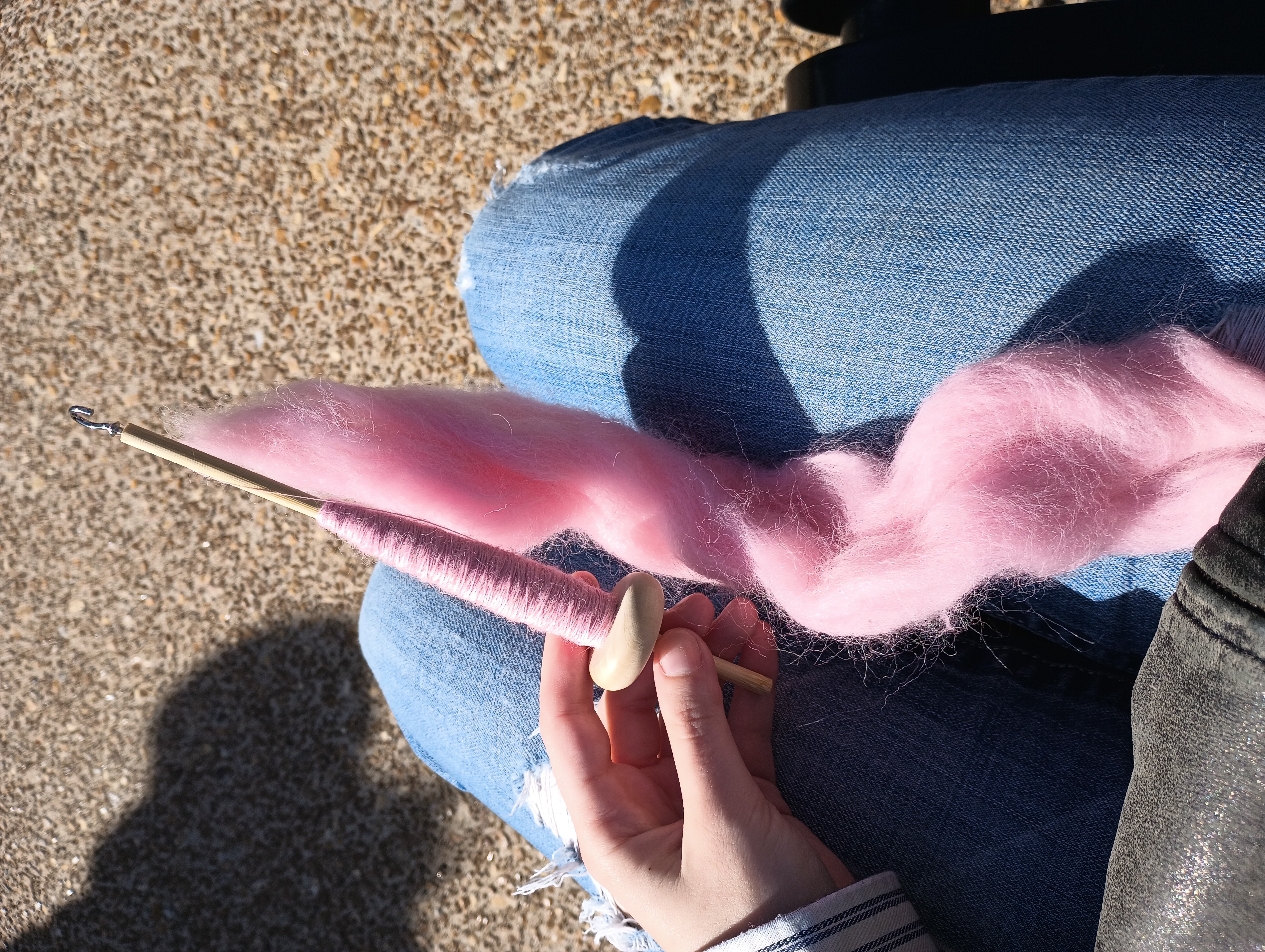Spinning thread (Greek style)
I began my personal spinning adventures on a turkish spindle and started with spinning yarn for my knitting. I knew that in preparation for my workshop and for my own experimentation I wanted to also try spinning thread-weight and eventually weaving with the thread that I spun. I started out on my DIY spindles which are quite light. It makes them a bit tricky to handle because they reverse very quickly, but also makes them ideal for spinning very fine thread. My thread is by no means consistent and beautiful, but I did find it much easier to spin consistently thin than I expected, and also found it easier than spinning thicker yarn.
.jpg)


The white fiber is corriedale, and the colored is dyed shetland.
.jpg)
I didn't end up doing any plying because in the classical Greek era they seemed to generally weave with single z-spun threads. I did try to tablet weave a header band and then make a warp on my warp-weighted loom with this yarn that I spun. Unfortunately, I quickly realized that I would not be able to weave with it effectively. The wool sticks to itself quite a bit, and the constant abrasion of the tablets or of changing the shed kept breaking the threads. I tried oiling them with olive oil, another potentially Greek technique, but it didn't seem to help. I'm going to keep experimenting. Next step is to try spinning wool that still has its natural grease in it, or adding a lot more oil to the fiber as I go. As for this pile of thread, I will maybe ply some of it up and see if that helps, or use it for embroidery.
I also have this sweet spindle and distaff I commissioned from TheDancingGoats on Etsy. The whorl is based on surviving ancient Greek examples. The distaff I find a bit unwieldy. It works fine tucked under an arm, but it's not any easier for me than just having some fiber up my sleeve or draped over my arm. The vase paintings tend to show spinners holding the distaff in one hand, but contemporary Greek traditions do have the distaff held under the arm.
.jpg)